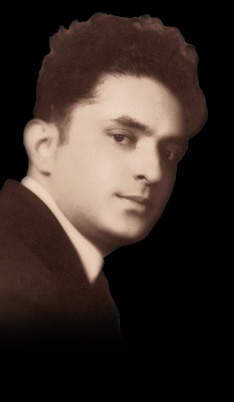
'

|
 |
Page 1 | Page 2 | Page 3 | Page 4 | Page 5 |
| Sample Essays |
9 |
PENTATONIC CHARMS OF THE ORIENT
As we read the Me’gi’la of Ruth, the scent of the fields rises not only from the idyllic poetic text, but also from the peaceful, calming melodies -- the sounds of nature, soil and harvesting. These Pentatonic songs seem naïve and simplistic, but those who know the charms of the orient, discover in them a philosophical depth, a creative rural reality, combining sadness and happiness, openness and concealment, innocence and dreaming as well as thought and feeling. |
| |
| |
Hundreds of years after the Nus’cha’ot appropriate to the reading of the To’rah and the Me’gi’lot had crystallized, a great poet named Rabbi Meir Ben Yitzchak Nehorai, who was a cantor in Worms, Germany, in the eleventh century generation of Rashi, composed the wonderful poem Ak’da’mut Mi’lin Ve’Sha’ra’yut Shu’ta (“I utter these words as a prelude to this discourse”). The poem is about the happiness that will come upon the Israelites and the calamity that will be the destiny of those who persecute them. It is an expression of the eternal optimism of the Jewish people. Interestingly, the melody, which was also composed by the poet himself, is based on the Pentatonic scale. |
| |
Excerpt from: The Music of the Sha’vu’ot Festival Blessing the First Fruit, by Leib Glantz, 1956. |
| |
TOP |
| 10 |
SECRETS OF THE ANCIENT PRAYER MODES
We must develop a system by which we may be able to teach the basic musical line for each Nu’sach with which the cantors work. I have been thinking along these lines for a long time and I should like to present to you some of my observations. I have found them very useful in providing me with a theoretical basis in terms of which I can understand and differentiate the various Nus’cha’ot. I have not yet determined a satisfactory line for all of them, but I believe that this line of inquiry has already brought into the light some of the secrets of how the Nus’cha’ot are built. In certain of the Nus’cha’ot, where I was able to work out complete and correct lines or scales, the similarities, the differences and the confusions between them were clarified. Elements that formerly had to be described as accidental, or capricious, found their place in a regular pattern. |
| |
|
| |
Before we begin our analysis of the Nus’cha’ot in terms of musical intervals, lines, modes and scales, let us first briefly review the concept of Nu’sach itself. The Jews used this term in the same way as did other oriental peoples, such as the Arabs and the Hindus. They used it to describe a short musical line, a musical group or a musical phrase, which was the basis of their melodies. Once the performer knew these short musical lines he was left to himself to improvise and elaborate upon that basic line. |
| |
|
| |
Poetic legend has it that God himself sang these melodies to Moses on Mt. Sinai, when He gave him the To’rah. To our forefathers it was unthinkable that God should not reveal himself in music. How lofty an origin does our tradition ascribe to the music of our prayers! |
| |
|
| |
Although legend and folklore place the origin of the Mi’Sinai prayer melodies even further back in the mists of history than the Biblical cantillations, musicological research has demonstrated that these Mi’Sinai melodies developed later -- in the Diaspora. The first group, the musical lines based upon the Biblical cantillation modes, has history that goes back at least 2400 years. Both the Biblical modes and the Mi’Sinai melodies were exposed to many different influences and to many different cultures in their long history, but their main features have remained the basis of synagogue music to this day. |
| |
Excerpt from: The Musical Basis of Nu’sach Ha’Te’fi’la, by Leib Glantz, 1952. |
| |
TOP |
| 11 |
MUSIC - A "DIALECT" BETWEEN MAN AND GOD
As a child, before I could speak, before I learned how to spell – I instinctively sensed that music, whether instrumental or vocal, was a wonderful form of communication.
As I grew older and began reflecting on the different paths of human language, I began to comprehend the secrets of harmonic musical tones. Music became the special “dialect” that I feel exists between man and God. It is like a ladder reaching up from the earth into the heavens. Whether a gloomy melody or a happy song -- both can elevate us from mundane surroundings to spiritual highs. |
| |
|
| |
Yom Ki’ppur, the Day of Atonement, is a day in which the People of Israel devote themselves to purify and sanctify their “contaminated” souls. For one whole day, from the opening Kol Nid’rei prayer until the final service of Ne’i’la -- a crisis takes place, as man comes close to God, and God to man. This is a ceremony that is performed in the most beautiful of languages -- the language of music! |
| |
Excerpt from: The Music of Yom Ki’ppur, by Leib Glantz, 1940. |
| |
TOP |
| |
|
|
| Page 1 | Page 2 | Page 3 | Page 4 | Page 5 |
| |
|
|
|
| Copyright © 2007, by Dr. Jerry Glantz |
|
|